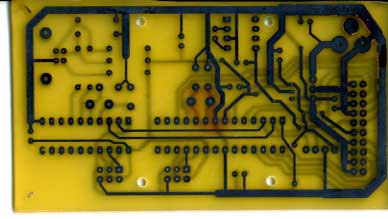Capacitors and transistors still not here, but I expect them any day.
Although I have more testing to do, I believe that the software for the PS/2 to ASCII keyboard interface is working the way I want it to. I still need to hook it back up to an Apple 2, as well as try a different keyboard(all testing to date has been with a single example). I plan on building a small batch of printed circuit boards, once I get a few of the Apple 1 kits shipped out. The Apple 1 project has been expensive and I’m going to need to recoup some of the investment before spending more money.
If you stick to acquiring old units through flea markets, word of mouth and yard sales, retro-computing doesn’t tend to be an expensive hobby. However cloning an obsolete design can get expensive, real quickly.
Now that the Apple 1 is nearly complete, my mind has been free to start revisiting some projects that are on hold. I have been looking to see if I have overlooked any internet data on the City Point and Army Line Model Railroad. So far, it looks like my previous research efforts have turned up most of what is readily available. Once the Apple 1 stuff has settled down, I plan on building an initial module in order to try out some construction techniques. I also have some thoughts about animating the layout using my Mimeo 1 as the brains. Animation of a layout in this era might be a bit different than more modern eras, since the internal combustion engine and electric power were not developed. However there was plenty of wind, steam, human and horse power available to move things around. Also the sounds of a busy wharf might make for some interesting computer controlled sound effects.
One other thing I’ve got on the drawing board, is putting together a short video podcast demonstrating operation of the keyboard interface and the Apple 1 monitor. Be forewarned, if you have subscribed to my podcast you might have a large file coming your way, in the not to distant future.

